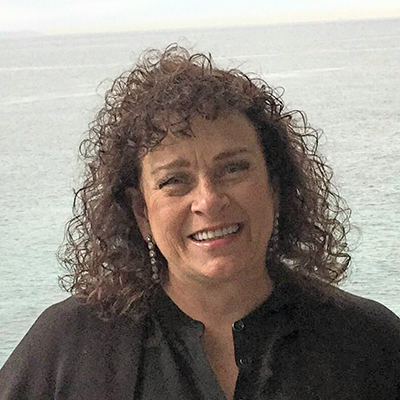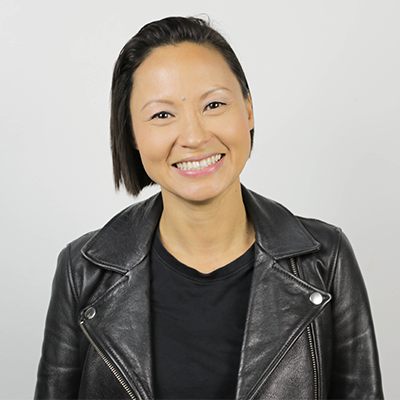Episode 04: Five themes that will define consumer-directed healthcare in 2021
Published on January 18th, 2021
The healthcare benefits industry is on a transformative journey. Accelerated by the impact of COVID-19, consumer-directed healthcare saw some surprisingly positive developments as consumers proved they could adapt to new technologies, and quickly. And, more than in recent memory, employers, brokers, and consumers alike were paying close attention to the coverage and care they have access to, and the costs associated with these benefit programs.
In this episode, we bring you highlights from the 2021 Health Benefits Forum, a virtual roundtable we hosted last month. Listen as the panel discusses the five key themes driving change in our industry in 2021. Panelists include Karli Dunkelberger of Alight, Jason Lacey of Foulston Seifkin LLP, and Cat Perez of HealthSherpa. Moderated by Brian Colburn.
Additional resources:
Transcript
Brian Colburn – Welcome to creating healthier futures. A new podcast from Alegeus. I’m Brian Colburn.
Anna Lyons – And I’m Anna Lyons. In this series will reveal the state of health care consumerism through trends and research, our own data and the health benefit experts that are driving our industry forward. To download the materials discussed in this episode or learn more on the topic. Be sure to visit Alegeus dot com. That’s a. l. e. g. e. u. s. dot com. Thanks for tuning in.
Brian Colburn – Last month. Alegeus hosted a virtual forum where a panel of experts from across the industry share their views on the state of health benefits the themes that will shape the industry in the coming year. In today’s episode. We bring you highlights from this discussion. The voices you’ll hear include Cat Perez of HealthSherpa, Karli Dunkelberger of Alight and Jason Lacy Foulston Seifken LLP. We hope that you find this insightful as you think about your business priorities and twenty twenty one.
Anna Lyons – As is the case with most virtual events audio quality can be suspect at times. Thank you for bearing with us. During these imperfect moments for more data and details on the themes discussed today download our twenty twenty one health benefits outlook at Alegeus dot com backslash outlook.
Brian Colburn – Okay. Let’s dive into the themes and we’ll start with the first one which is this theme of digital transformation hyper personalization. So everybody’s heard the saying if you build it, they will come. I think it’s probably fair to say in healthcare that has not been true, so lots of innovation lot of point solutions. That haven’t really come together in the right way to deliver the value that ultimately we think is likely to come from those or consumers in ultimately as an employer or benefits administrator. It’s about giving the right technology in the right engagement strategy right so you’re gonna put those two things together. So Karli I’d love to start with you as we think about the investments that Alight has made in digital experience recently keeps hot to some of those and what outcomes you expect those to drive and what is the role of personalization as you guys. Think about the future benefits.
Karli Dunkelberger – So you know a lot of questions there Brian and I’d like to take a pass at these questions by thinking about the personal piece of it you mentioned technology mentioned digital you mentioned Hyper personalization and really having an impact on people. I like to refer to it as having a digital cup of coffee with everybody. At their hire date, when they’re looking at benefits at annual enrollment or when they’re going through a life change in their life and we’ll covered are is really helpful to change in the outcome is being able to personalize the technology so someone can make their benefit choices and review. What options are available on any device. That happens to work for them. You know. I think about someone who wants to look at it on their iphone. They want to look at it under ipad. Or maybe we have the other end of the spectrum which is printed out like and you know, sit at the table and you know review with my spouse. We have found that when it comes to investing in the digital platform, we have to address all of those possibilities so each person can make their choices in a way that helps them understand their options and then ultimately make those decisions. And here’s a really cool thing that we have invested in which is to say that when someone does go into their annual enrollment process or they’re a new hire and they’re making choices, what we’re doing is we’re pulling in data we know about them or we know about our clients and we’re asking a few questions like hey would you like to pay a lower premium now and then potentially have higher out of pocket expenses or would you like to pay a little bit more for your health insurance now and then have a more predictable lower out of pocket expense when you actually need healthcare. What we found is if we can go through a few questions in that enrollment process. We can help lead somebody to a better choice.
Brian Colburn – Yeah it’s really great. And I think that that jives pretty well as how we’ve thought about the market. Which is I think. Historically the market is let’s educate consumers and get them smarter on healthcare and i think where things are going today feels much more around like recognizing there are limitations on how much consumer is ever going to know about healthcare and using technology were practical solutions to help get them to better places without expecting them to have a Ph.D. in medicine or in the healthcare space. So it’s really great. The other piece of this is around adoption in engagement. So I think you know, Karli a question for you. Then Cat would love to hear from you from a product perspective, as you think about employer and consumer engagement under other tools approaches that Karli are being used at Alight for example to help drive some of that absolutely so when it comes to employers in fighting how to engage their people or even as a partner with our clients.
Karli Dunkelberger – We found that leveraging surveys periodically throughout the year can be a great way to ask people what’s important to them, what they’re looking to learn. And then the counterbalance to that is when we pick up information about what someone wants to hear about or what they value from their employer from their healthcare provider. When they’re using healthcare we can then help clients target messages and target them to the right people based on their health plan of choice, based on utilizing agency’s efforts as their series. And kind that all in so that we can help people use their accounts wisely and also make great decisions about which healthcare provider to us based on quality based on price based on location coup and really take more control of the buying and paying process or healthcare.
Brian Colburn – so Cat, maybe the pivot to you. And what I love about your background is your some deep in products and sort of that consumer. What strategies do you see or are you using today to sort of drive adoption particularly tech adoption amongst consumers?
Cat Perez – Yeah so, there’s so much of what Karki said. And i don’t know if it’s just the panelists who can see me or if everyone can see me but I was very much nodding my head in agreement. There’s a lot of what Karli said that that plays into the product development cycle as a relates to services that were providing technology were building for consumers. Decisions support is something that is critical in the experiences. In the tools here at HealthSherpa that we have and really making sure that we are criticizing the experience the consumer. What providers do they want to keep when they’re looking at new networks. Do they want to consider as they choose a new plan. Can they technically afford monthly to pay for health app access to those benefits. So there’s just so much that goes into it so decision support is key. And that’s part of personalization. Really as you think about making it easy and simple you can do this. The products for sure right. We’ve seen in other models. Think turbo tax but as you mentioned as you have already mentioned. There’s only so there’s a secret right because it is very complex on the regs are constantly changing. It is very very turkey So that’s why you know having access to brokers consumer advocates support. That’s just always going to be part of the experience so when we think about products we also think about the experiences that exist outside of technology. Because that’s just always going to be a of it. We know quirk facts. That even the most of the I think last open enrollment the individual coverage volume the cancer the marketplace about half was broker system. So I think those are just you know important days to note the other thing that I’ll mention is data so as we kind of create a roadmap, prioritize. We’ve had what fifteen million shopping sessions on our platform and they’re so city gained by looking at that data analyzing that data. What plans are people choosing. What are those households. Federal poverty limit. Look for holes right. There’s a lot to be learned from that data as we decision support tools and engines.
Brian Colburn – Some great points so let’s pivot then. I guess to the second theme which is kind of this topic of more flexible healthcare coverage. I would say we see two things. One would be obvious to most people. This rise of the gig economy. Right particularly I think COVID has some hastened it a bit and then the other thing that we see is we see a lot of younger folks who sort of come into the workforce and they say ‘why is it that I get my health insurance from my employer when like on average, I’m going to be here for two and a half years. Does that make any sense?’ And so some of the startups that we talk to and younger founders, companies are starting to think. Is it really the right thing to have a one-size-fits-all healthcare solution for my company or am I better off offering some type of pre tax benefit like an ICHRA and then letting my employees go figure out the solution that works best for them. So if you’re my situation with four kids won’t a chronic condition. You’re probably going to choose a different plan and somebody else would. Cat if I can stick with you to start with. How has the gig economy impacted healthcare and health benefits as an industry. And where do you see that?






